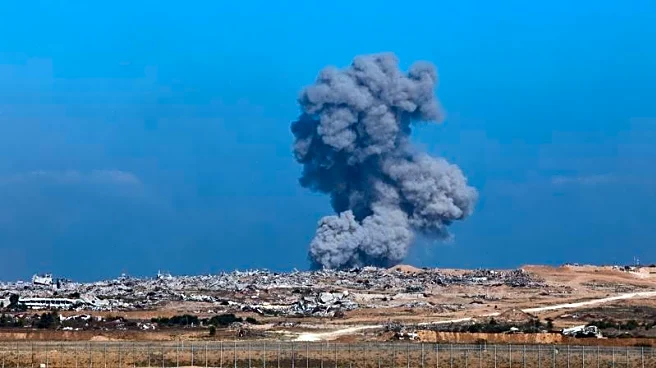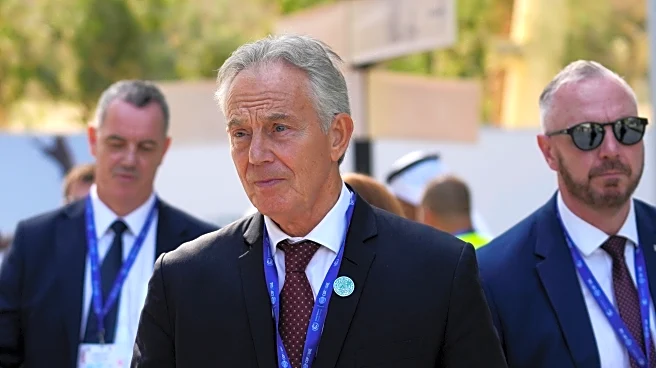What's Happening?
President Trump has presented a 20-point peace plan aimed at ending the conflict in Gaza, promising 'eternal peace in the Middle East.' The plan, supported by Israeli Prime Minister Benjamin Netanyahu, has been met with skepticism due to its lack of detailed provisions. Observers have noted that the plan is vague, with many aspects still requiring negotiation. The proposal includes a ceasefire, the release of hostages by Hamas, and a phased Israeli withdrawal contingent on Hamas disarming. Despite the optimism expressed by Trump, critics argue that the plan's ambiguity could hinder its implementation.
Why It's Important?
The plan represents a significant U.S. effort to resolve the ongoing conflict in Gaza, which has resulted in thousands of Palestinian casualties. If successful, it could lead to a reduction in hostilities and improve humanitarian conditions in the region. However, the lack of clarity in the plan raises concerns about its feasibility and the potential for renewed conflict. The proposal's success or failure could impact U.S. relations with Middle Eastern countries and influence future peace negotiations in the region.
What's Next?
The plan's implementation depends on Hamas's acceptance, which remains uncertain. The international community, including Arab and Muslim nations, has expressed support for the initiative, but skepticism persists. Negotiations are expected to continue, with the possibility of amendments to address concerns raised by various stakeholders. The outcome of these discussions will determine the plan's viability and its impact on the region's stability.












